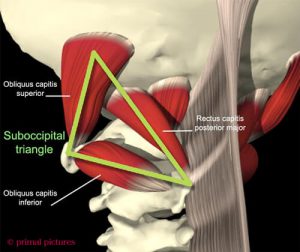A profession that appears to grow and evolve almost all the time, the realm of massage therapy and bodywork is quite broad, comprising what seems to be an ever growing list of techniques and modalities. The dynamic nature of manual therapy may be a large part of what draws so many different people to this field, for there seems to be a modality to suit nearly every practitioner—and there is always the option to learn whole new methods of manual therapy as one continues to advance in both years and experience. However, despite the massive amount of diversity that exists among the various modalities within this industry, there remains a way to divide these hands-on methods into two basic camps: deep tissue massage techniques and massage that aims primarily for relaxation.
Of course, narrowing such a diverse field down to two categories requires some sweeping simplifications, but for the purposes of finding direction in one’s career, including the selection of massage therapy continuing education, this strategy may prove beneficial. To flesh out the two categories a bit further, massage for relaxation might entail those techniques or modalities that are composed, for the most part, of lighter, longer and more gliding strokes. Typically, the goal of a session performed by a practitioner of such a method will be to help induce calm and relaxation for the client on his or her table. In these cases, there is not as much focus on specific muscles or joints of the body, and the pressure applied by the massage therapist or bodyworker tends to be somewhat lighter as well.
As for deep tissue massage techniques, these often differ from the relaxation category in that greater pressure is applied by the manual therapist and the work frequently focuses on specific regions of the body that may be involved in causing the client problems such as pain and limited range of motion. Many times, the goal of a session that centers on deep tissue massage techniques may be to ease specific aches and pains and perhaps even find a way to begin undoing any postural patterns or other issues that could be contributing to chronic pain.
Essentially, if one were to look at the field of massage and bodywork as a spectrum, deep tissue massage techniques might fall toward the end of the spectrum with massage for sports therapy, medical massage and orthopedic massage. Usually, those practitioners who pursue more advanced knowledge of deep tissue massage techniques are those who feel passionate about the more clinical side of massage therapy and bodywork. This side of the spectrum could be defined a bit further as the use of deep tissue massage techniques for the management of pain. Financially speaking, taking one’s career in this direction can be a lucrative choice, as clients tend to be willing to pay a premium price to find a lasting, noninvasive solution to their pain.
If you are looking to further your own understanding and skill level in the arena of deep tissue massage techniques, then seeking out high-quality continuing education classes may be your best move. Depending on the state or region where you work as a massage therapist, it could be important to find an NCBTMB approved provider—a process that can be streamlined by using a phrase such as “find an approved CE provider NCBTMB” while searching the Internet. If you happen to be an athletic trainer, you can use a similar phrase to find a BOC approved provider for your next continuing education course.
The CE programs developed and delivered by Erik Dalton fit the criteria outlined in the above paragraph. Each course delves deep into Myoskeletal Alignment Techniques (MAT)—the modality Dalton created from decades of research and experience—and these continuing education programs can be completed in several ways. For example, you may choose to attend one of the in-person seminars hosted by Dalton and his colleagues from the Freedom From Pain Institute. You might also select to complete one of the home-study CE programs Dalton has designed or earn a massage online CEU by signing up to take a continuing education class on MAT completely via the Internet.
Click here for more information.
On sale this week only!
Save 25% off the "Dalton Technique Treasures" eCourse
The “Dalton Technique Treasures” eLearning course is a compilation of some of Erik’s favorite Myoskeletal Alignment Techniques (MAT). Learn MAT techniques to assess and address specific sports injuries, structural misalignment, nervous system overload, and overuse conditions. ON SALE UNTIL April 29th! Get Lifetime Access: As in all our eLearning courses, you get easy access to the course online and there is no expiry date.






